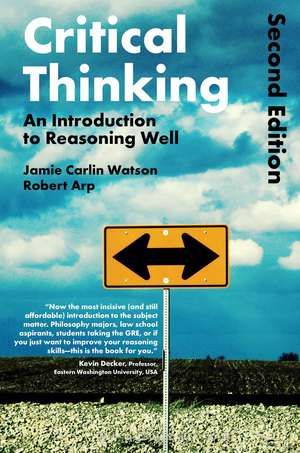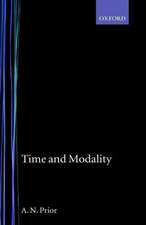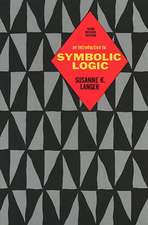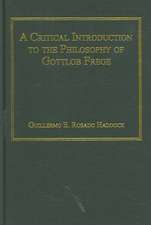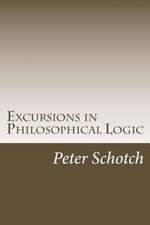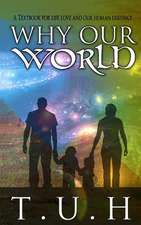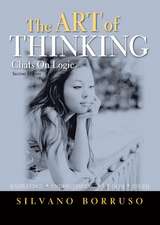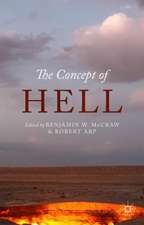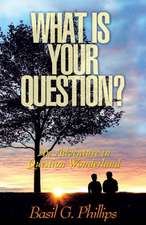Critical Thinking: An Introduction to Reasoning Well
Autor Dr Robert Arp, Dr Jamie Carlin Watsonen Limba Engleză Paperback – 16 dec 2015
| Toate formatele și edițiile | Preț | Express |
|---|---|---|
| Paperback (1) | 185.57 lei 6-8 săpt. | +67.21 lei 7-13 zile |
| Bloomsbury Publishing – 16 dec 2015 | 185.57 lei 6-8 săpt. | +67.21 lei 7-13 zile |
| Hardback (1) | 774.44 lei 6-8 săpt. | |
| Bloomsbury Publishing – 16 dec 2015 | 774.44 lei 6-8 săpt. |
Preț: 185.57 lei
Preț vechi: 224.02 lei
-17% Nou
Puncte Express: 278
Preț estimativ în valută:
35.51€ • 37.35$ • 29.67£
35.51€ • 37.35$ • 29.67£
Carte tipărită la comandă
Livrare economică 08-22 ianuarie 25
Livrare express 04-10 decembrie pentru 77.20 lei
Preluare comenzi: 021 569.72.76
Specificații
ISBN-13: 9781472595683
ISBN-10: 1472595688
Pagini: 456
Ilustrații: illustrations
Dimensiuni: 156 x 234 x 30 mm
Greutate: 0.75 kg
Ediția:Revised
Editura: Bloomsbury Publishing
Colecția Bloomsbury Academic
Locul publicării:London, United Kingdom
ISBN-10: 1472595688
Pagini: 456
Ilustrații: illustrations
Dimensiuni: 156 x 234 x 30 mm
Greutate: 0.75 kg
Ediția:Revised
Editura: Bloomsbury Publishing
Colecția Bloomsbury Academic
Locul publicării:London, United Kingdom
Caracteristici
Packed with new pedagogical features including a glossary, answers to selected exercises, key terms, point-by-point chapter summaries and advice on further reading
Notă biografică
Robert Arp teaches Logic at the University of Missouri, USA and is a Researcher and Analyst for projects with the US Army at Ft. Leavenworth. He is the author of An Evolutionary Account of Creative Problem Solving (2008), co-author of Building Ontologies with Basic Formal Ontology (2011) and 101 Ideas that Changed the Way We Think (2013).Jamie Carlin Watson is Assistant Professor of Philosophy at Broward College, USA.
Cuprins
Preface to the Second Edition Part I: The Basics of Good Reasoning1. The Basic Tools of Reasoning2. Evaluating ArgumentsPart II: Deductive Reasoning3. Thinking and Reasoning with Categories4. Basic Propositional Logic5. Truth Tables6. Rules of InferencePart III: Inductive Reasoning 7. Probability and Induction8. Inductive Arguments9. Experiment and Inference to the Best Explanation10. Informal Fallacies11. Putting it All Together12. Reasoning on Graduate Entrance ExamsGlossaryIndex
Recenzii
With its new glossary and appendix material, novel real-life examples and freshly created summary boxes, Arp and Watson's second edition of Critical Thinking is now the most incisive (and still affordable) introduction to the subject matter. Philosophy majors, law school aspirants, students taking the GRE, of if you just want to improve your reasoning skills-this is the book for you.
Well-explained, clearly laid out and hip, this is one of the best-if not the best-critical thinking textbooks on the market today. Critical Thinking comes close to hitting the ideal balance between explanation and meaningful practice, making this book the whole package
Engagingly written with a good mix of academic and real life examples and exercises, this textbook by Arp and Watson is a great option for a wide range of logic courses. Covering all of the terrain required by a logic text, this book does a very nice job of taking on what can be dauntingly formal topics in a way that doesn't feel so abstract and obscure. Unlike many other logic books, this text does a much more thorough job on inductive logic-a topic seriously neglected in too many logic books-and includes a much welcomed section on putting all of the critical thinking skills learned together. Highly recommended.
This is a great text for any critical thinking or introductory logic course. Jamie and Rob have a way of explaining key words and ideas simply and clearly, providing examples that students observe in everyday life.
Critical Thinking balances clarity, detail and a user-friendly approach for students with the kind of rigor and care instructors will welcome. As a thorough introduction to basic tools of logic, probability and scientific reasoning, this text is a winner.
Watson and Arp have built an accessible portal for students learning logic and its basis in human language and expression. In addition to serving courses on formal logic, the text provides straightforward and clear supplements for instructors who teach college writing with a focus on argumentation. In particular, its sections on the challenges of inductive reasoning and logical fallacies will prove especially helpful for showing undergraduates how to better analyze evidence and critique arguments.
In this book, Robert Arp and Jamie Watson provide the tools to overcome one of the greatest deficits in the developed world: that of critical thinking.
Well-explained, clearly laid out and hip, this is one of the best-if not the best-critical thinking textbooks on the market today. Critical Thinking comes close to hitting the ideal balance between explanation and meaningful practice, making this book the whole package
Engagingly written with a good mix of academic and real life examples and exercises, this textbook by Arp and Watson is a great option for a wide range of logic courses. Covering all of the terrain required by a logic text, this book does a very nice job of taking on what can be dauntingly formal topics in a way that doesn't feel so abstract and obscure. Unlike many other logic books, this text does a much more thorough job on inductive logic-a topic seriously neglected in too many logic books-and includes a much welcomed section on putting all of the critical thinking skills learned together. Highly recommended.
This is a great text for any critical thinking or introductory logic course. Jamie and Rob have a way of explaining key words and ideas simply and clearly, providing examples that students observe in everyday life.
Critical Thinking balances clarity, detail and a user-friendly approach for students with the kind of rigor and care instructors will welcome. As a thorough introduction to basic tools of logic, probability and scientific reasoning, this text is a winner.
Watson and Arp have built an accessible portal for students learning logic and its basis in human language and expression. In addition to serving courses on formal logic, the text provides straightforward and clear supplements for instructors who teach college writing with a focus on argumentation. In particular, its sections on the challenges of inductive reasoning and logical fallacies will prove especially helpful for showing undergraduates how to better analyze evidence and critique arguments.
In this book, Robert Arp and Jamie Watson provide the tools to overcome one of the greatest deficits in the developed world: that of critical thinking.
